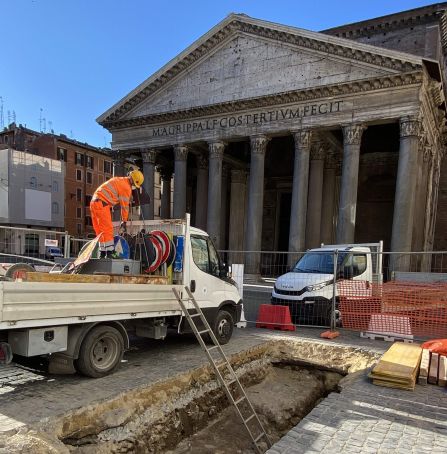Unexpected opening in Piazza della Rotonda leads to important rediscovery.
Rome archaeologists have announced that a sinkhole which opened up in front of the Pantheon in recent days has brought to light the ancient imperial flooring in Piazza della Rotonda.
The discovery of the seven travertine slabs, located about 2.5 metres below the existing level of the piazza, is in fact a rediscovery.
The flooring was uncovered during works in the 1990s but was sealed up again after being documented by archaeologists who have now had a chance to re-examine the ancient remains.
"More than 20 years after their first discovery" - explains Daniela Porro, special superintendent of Rome - "the slabs of the ancient floor of the square in front of the Pantheon emerge intact, protected by a layer of fine pozzolan", in what he described as "unequivocal proof of the importance of archaeological protection, particular in a city such as Rome."

In imperial times the square was much larger than the current one, opening out in front of the Pantheon, the temple dedicated to all the Roman gods, built by Agrippa between 27 and 25 BC.
The area was completely transformed in the second century AD, under Emperor Hadrian, with the level of the piazza raised and repaved.
General Info
View on Map
Rome: Pantheon sinkhole reveals original ancient Roman floor
Piazza della Rotonda, 00186 Roma RM, Italy




















